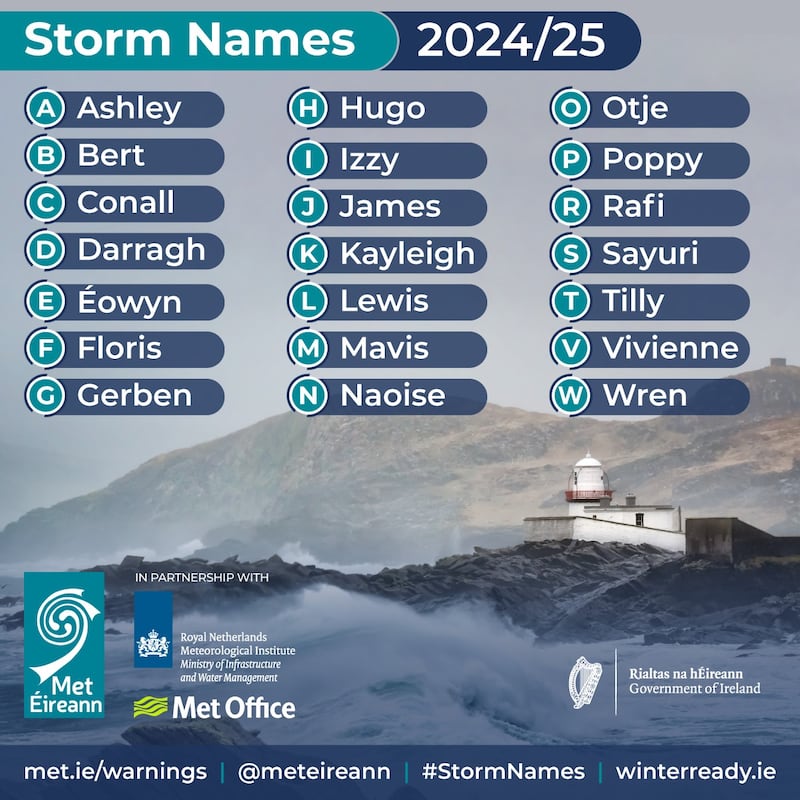Storm season is upon us and with it comes a new list of names for the tempests on the horizon.
The season lasts from one September to another, and 2023-2024 has been a particularly busy year. The last storm to hit Ireland was Storm Lilian last week, which brought high winds and rain to the west coast, and was the 12th named storm of the season.
The full list for the season ahead is Ashley, Bert, Conall, Darragh, Éowyn, Floris, Gerben, Hugo, Izzy, James, Kayleigh, Lewis, Mavis, Naoise, Otje, Poppy, Rafi, Sayuri, Tilly, Vivienne and Wren. Letters Q, U, X, Y, Z are not included, which is in line with the US National Hurricane Center naming convention.
Storms Conall, Darragh, Hugo, Izzy, Naoise, Poppy and Vivienne were named by Met Éireann.
READ MORE
Named storms were first introduced in 2015 by Met Éireann, the UK Met Office and the Netherlands meteorological service (KNMI), with each choosing names every year.
Met Éireann’s contributions were taken from a list of more than 500 suggestions by primary schoolchildren participating in the ESB Science Blast programme last February.
Eoin Sherlock, head of the forecasting division at Met Éireann, said the naming of storms is important in raising awareness of the hazards they can bring.
“Naming each storm increases the level of public safety and preparedness as people are more likely to remember and respond to warnings when storms are named,” he said.

“Ireland, and the world, are experiencing the effects of severe weather events more frequently and more intensely as a result of climate change. We see how severe wind and rain events can directly impact public health, safety and livelihoods.
Storms are named when they could cause medium or high impacts in one of the three partner countries.
Storm naming happens in conjunction with orange and red weather warnings, which could be for wind, rain or snow or a combination of these conditions.
The UK Met Office’s head of situation awareness, Will Lang, said the naming of storms had been shown to work. He cited Storm Babet, which brought exceptional rainfall to parts of eastern Scotland in October 2023 as an example of the importance of named storms.
A survey afterwards found 97 per cent of people within the amber and red warning areas were aware of the warnings and 89 per cent of them took action as a result.
- Sign up for push alerts and have the best news, analysis and comment delivered directly to your phone
- Join The Irish Times on WhatsApp and stay up to date
- Listen to our Inside Politics podcast for the best political chat and analysis













